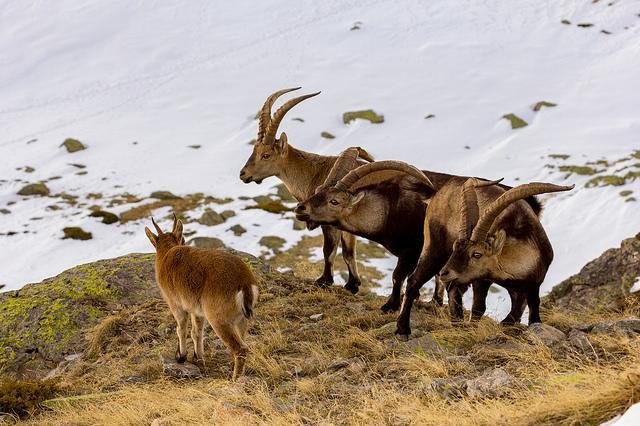A Mountain goat, or Capra pyrenaica, in the Guadarrama National Park, Madrid, Spain. Researchers have found that the level of biodiversity and the amount of funding countries receive do not always measure up. Photo by Javier Ábalos Alvarez
Aug. 23 (UPI) -- Researchers have found that the investments and resources allotted for conservation do not match up with the levels of biodiversity in the European Union.
The study, conducted at the University of Castile-La Mancha, the University of New York, the National Museum of Natural History, the University of Alcala and the University of Helsinki analyzed the correlations and inconsistencies between funding for conservation and the levels of biodiversity in countries of the European Union, finding that countries with the richest biodiversity did not always get more funding.
"Due to the large spatial variation in the distribution of biodiversity and conservation needs on a continental scale, the instruments of the EU should guarantee that countries with greater levels of biodiversity obtain more funding and resources for conservation than other countries with lower levels," David Sánchez Fernández, from the University of Castile-La Mancha, said in a press release.
The study, published in the August edition of Conservation Biology, compared three indicators of investment in conservation with three other indicators of biodiversity, total richness of species, endemic species and species of communal interest.
Researchers found some disparities in countries which received more or less funding than expected based on their levels of biodiversity.
"Spain is, together with Italy, the country with the richest biodiversity in Europe and it also has lots of funding and resources," Sánchez Fernández said. "To be specific, it is the country with the greatest Natura 2000 network area and that which receives the most funding from LIFE projects. However, the amount of money for agri-environmental measures is somewhat less than what it should be in terms of its levels of biodiversity."
The study showed that the extensive use of birds as an indicator of the effectiveness of conservation efforts is often unreliable, causing the correlations between biodiversity and funding to be more than for the rest of the groups studied.
Researchers hope the study results will help frame the new biodiversity strategy to 2020 adopted by the European Commission.















